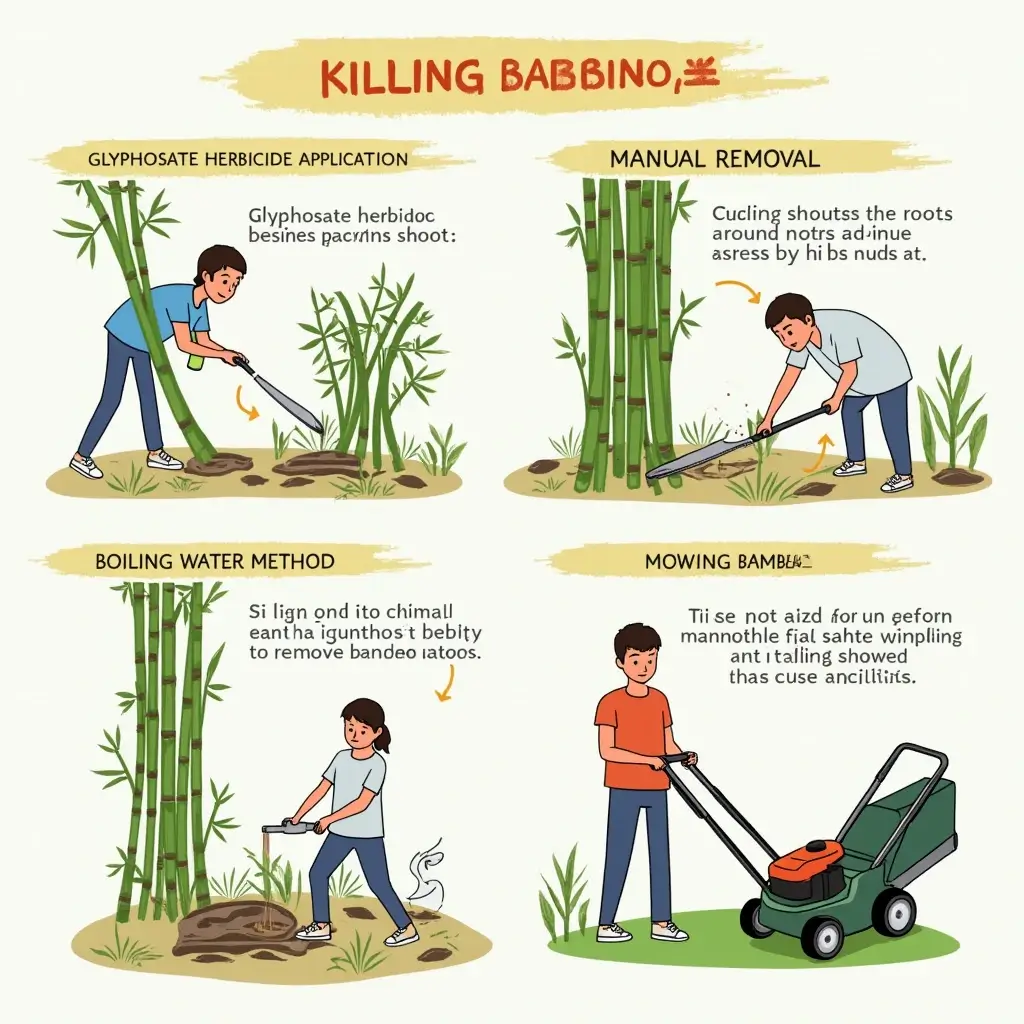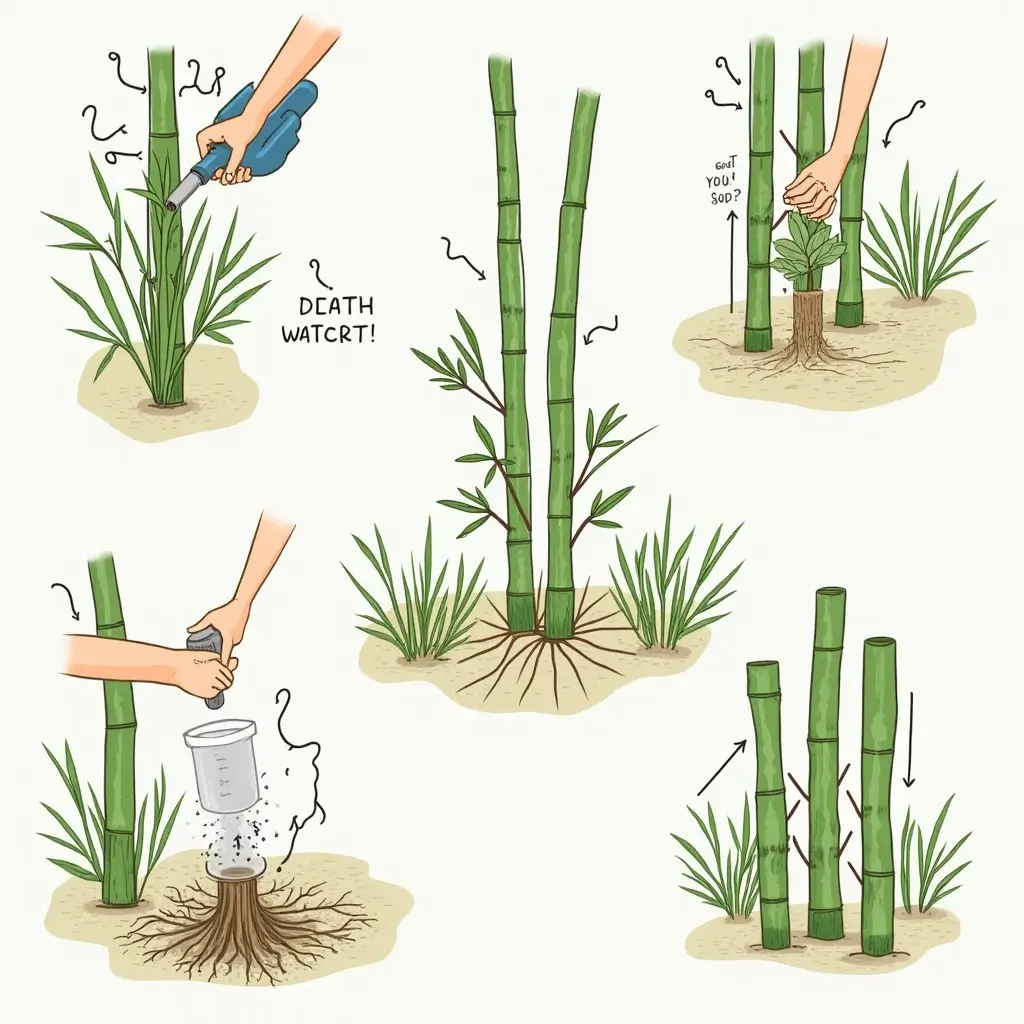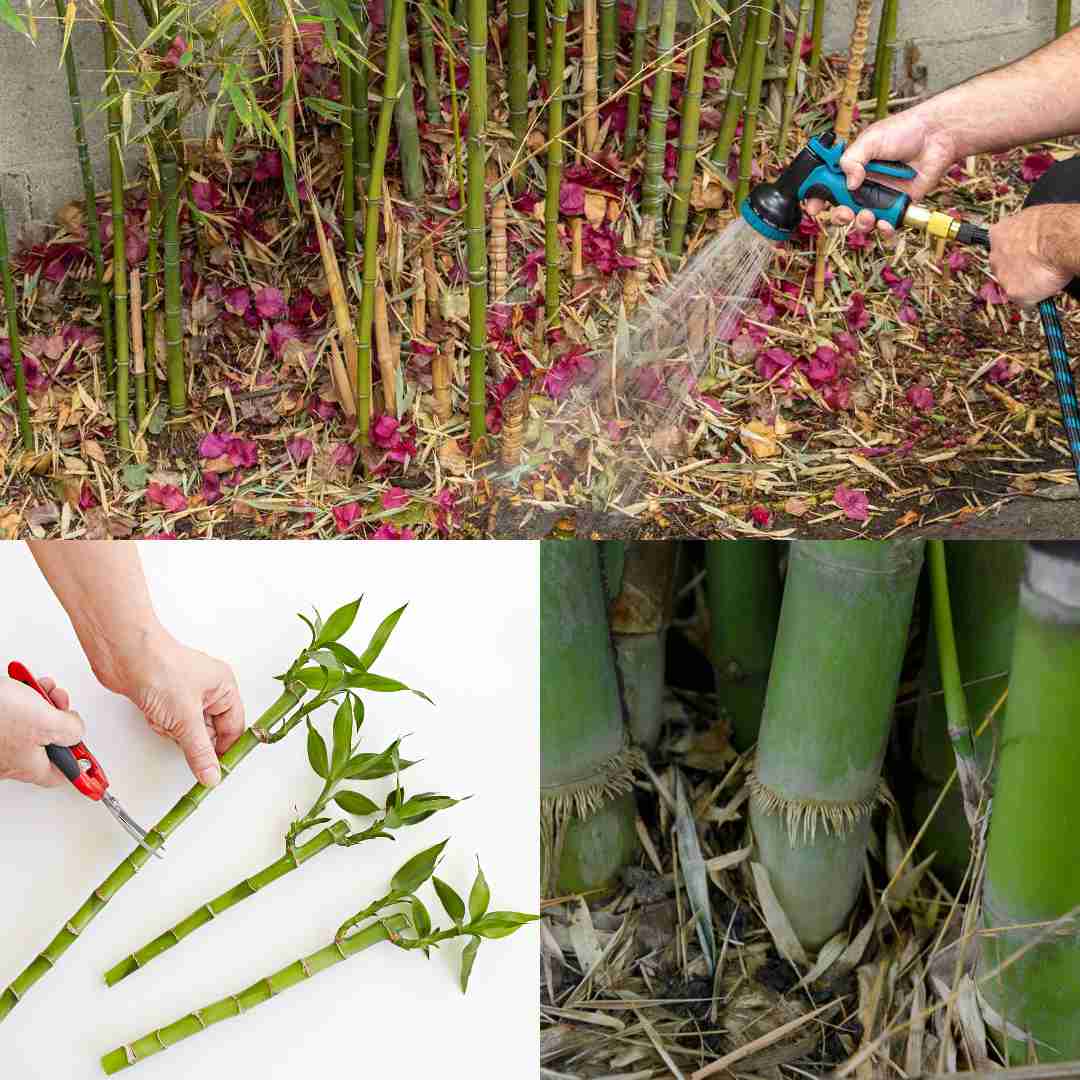Bamboo can be a beautiful addition to your garden, but when it grows out of control, it becomes a major nuisance. This fast-growing, invasive plant spreads quickly and can take over your lawn, damage structures, and even invade your neighbor’s yard. If you’re wondering how to kill bamboo and prevent its spread, you’re not alone.
In this article, we’ll explore effective bamboo removal techniques, discuss how to stop bamboo growth, and offer natural alternatives to using harmful chemicals. Whether you want to eradicate bamboo from your garden or prevent it from taking over your yard, this guide will give you the tools you need to deal with bamboo once and for all.
What is Bamboo and Why Should You Remove It?
Bamboo is an evergreen perennial grass that grows rapidly in tropical and temperate climates. While it can be an asset for privacy screens or landscaping features, bamboo also has a reputation for being invasive. Some species, such as running bamboo, spread quickly through underground rhizomes (horizontal stems), which allows new bamboo shoots to appear far from the original plant.
If left unchecked, bamboo can cause several issues:
- Rapid growth: Bamboo can grow up to one meter per day in optimal conditions.
- Invasiveness: It competes with other plants, threatening biodiversity.
- Difficulty of removal: Once established, bamboo’s deep rhizomes make it extremely hard to remove.
To kill bamboo and regain control of your yard, you need the right techniques. Let’s break down the most effective ways to remove bamboo, including both chemical and natural methods.

How Do You Kill Bamboo? 4 Effective Methods
1. Bamboo Herbicide Treatment: Using Pesticides
One of the most reliable methods to kill bamboo is applying a glyphosate-based herbicide. Glyphosate is a broad-spectrum herbicide that works well on bamboo. However, while it kills the bamboo above ground, it doesn’t necessarily eradicate the underground rhizomes, so regrowth can occur. Regular application is necessary.
Steps to Apply Herbicide:
- Timing: Apply herbicide during the growing season, especially when the shoots are new. This ensures the plant absorbs the chemical effectively.
- Target the shoots: Spray the herbicide directly onto new bamboo shoots, making sure to cover them thoroughly.
- Follow-up treatments: After initial application, keep an eye on any regrowth and reapply as necessary.
Pros:
- Highly effective at preventing new growth.
- Quick results.
Cons:
- Requires repeated applications.
- May harm surrounding plants if not applied carefully.
2. Manual Bamboo Removal: Digging Up Bamboo Roots
For those looking for a more hands-on approach, manual removal can be a highly effective method for removing bamboo roots permanently. While it is labor-intensive, it allows you to physically remove the bamboo and prevent it from returning.
Steps for Manual Bamboo Removal:
- Cut back the bamboo shoots: Use a hand saw or pruning shears to cut the bamboo down as close to the ground as possible.
- Dig out the rhizomes: Bamboo rhizomes grow horizontally, and sometimes vertically, up to 3 feet deep. Use a shovel or spade to dig around the plant and expose the rhizomes.
- Remove the rhizomes: Pull up the rhizomes carefully, starting from the outermost edges. The inner portions of the root system may be more interwoven, so dig deeper if necessary.
- Dispose of the roots: Make sure to dispose of the rhizomes properly to prevent regrowth.
Pros:
- Effective for eradicating bamboo from your garden.
- Chemical-free, making it a good option for organic gardeners.
Cons:
- Labor-intensive and time-consuming.
- May require multiple attempts if any rhizomes are left behind.
3. Mowing: Preventing New Growth
For younger bamboo shoots, regular mowing can help reduce bamboo growth over time. This is an ongoing process that works well in combination with other methods like herbicide application or manual removal.
Steps to Mow Bamboo:
- Cut down the shoots: Use a lawnmower to mow young bamboo shoots regularly.
- Cut down taller bamboo: For mature bamboo, use a garden lopper or chainsaw to reduce the height.
- Reapply herbicide: After mowing, spray the area with glyphosate to stop further growth.
Pros:
- Easy to do with the right equipment.
- Works well for controlling young bamboo growth.
Cons:
- Does not completely kill bamboo, so it must be done repeatedly.
- Ineffective for mature bamboo unless combined with other methods.
4. Boiling Water: A Natural Bamboo Control Method
For an organic approach, pouring boiling water on bamboo roots is an eco-friendly solution to stop bamboo growth. This method works best when combined with manual removal.
Steps to Use Boiling Water:
- Dig around the bamboo roots: Expose the roots using a shovel or garden spade.
- Pour boiling water: Carefully pour boiling water directly onto the exposed rhizomes. This will scorch the roots and inhibit further growth.
- Repeat: Since bamboo is hardy, you may need to repeat this process to fully eliminate regrowth.
Pros:
- Chemical-free, making it a safe option for eco-conscious gardeners.
- Can be done with items you likely already have at home.
Cons:
- May require repeated applications.
- Can be time-consuming and labor-intensive.

How to Prevent Bamboo Spread
Once you’ve successfully removed bamboo, preventing it from regrowing is crucial. Here are some methods to prevent bamboo spread:
- Install bamboo barriers: A physical bamboo barrier can help contain the rhizomes and prevent them from spreading beyond a designated area.
- Regular maintenance: Regularly check the bamboo’s growth and promptly remove any new shoots to prevent them from establishing roots.
- Use mulch: Apply thick layers of mulch around bamboo plants to prevent new shoots from emerging.
Take Action and Stop Bamboo Growth
Dealing with bamboo can be challenging, but with the right methods, you can successfully kill bamboo and prevent it from taking over your yard. Whether you choose chemical, manual, or organic methods, consistency is key to ensuring complete bamboo eradication.
If you’re serious about kill bamboo naturally, the combination of boiling water and manual removal may be your best bet. If you’re looking for quicker results, herbicides like glyphosate will help stop the bamboo in its tracks, but they will require regular reapplication.
Now that you know how to remove bamboo from your garden, it’s time to take action and protect your yard from this invasive plant. Use these proven bamboo control methods and bamboo root removal techniques to regain control of your outdoor space.
Have you successfully eradicated bamboo from your yard? Share your tips and experiences in the comments below, or feel free to ask any questions about bamboo removal. We’d love to hear from you!
FAQ:
1. How do you permanently kill bamboo?
To permanently kill bamboo, you need to completely eliminate both the above-ground shoots and the underground rhizomes. The best methods include:
- Manual removal: Cut down all bamboo shoots and dig out the rhizomes, ensuring that you remove them completely. This can be challenging, as bamboo roots can grow up to 3 feet deep.
- Herbicides: Apply a glyphosate-based herbicide directly to the bamboo shoots, especially when the plant is actively growing. Reapply as needed to ensure that the plant doesn’t regrow from the rhizomes.
- Boiling water: Pour boiling water directly onto the bamboo roots to scald them. While this is a natural method, it may need to be repeated regularly to ensure full eradication.
- Regular maintenance: Even after removing the bamboo, you’ll need to regularly monitor the area and remove any new shoots that emerge.
2. What is the best killer for bamboo?
If you’re looking for a more natural solution, boiling water and manual removal can also be effective, though they tend to be more labor-intensive and require consistent effort.
3. Does vinegar really kill bamboo?
Vinegar can help kill bamboo to some extent, but it’s not as effective as other methods like herbicides or boiling water. Vinegar works as a natural herbicide, particularly if it’s used in high concentrations (such as horticultural vinegar, which has a higher acidity than household vinegar). It can damage the bamboo’s leaves and stunt its growth, but it may not completely eradicate the root system, especially in well-established bamboo.
For better results, vinegar is often used in combination with other methods, like digging out the rhizomes or using herbicides.
4. How can I get rid of bamboo?
To get rid of bamboo, there are several options:
- Manual removal: Cut down the bamboo and dig out the rhizomes. Make sure to remove all the underground roots to prevent regrowth.
- Herbicides: Apply a glyphosate-based herbicide directly to the bamboo shoots, especially during the growing season. You may need to reapply it multiple times to target new growth.
- Mowing: Regularly mow younger bamboo shoots to prevent them from growing taller, but this method is less effective for mature bamboo unless combined with other techniques.
- Boiling water: Pour boiling water directly onto the bamboo roots to scald them and stop new growth. This is a more natural, chemical-free approach.
- Bamboo barriers: If you want to keep bamboo contained in a certain area, installing a bamboo barrier (either physical or chemical) can prevent the roots from spreading.


